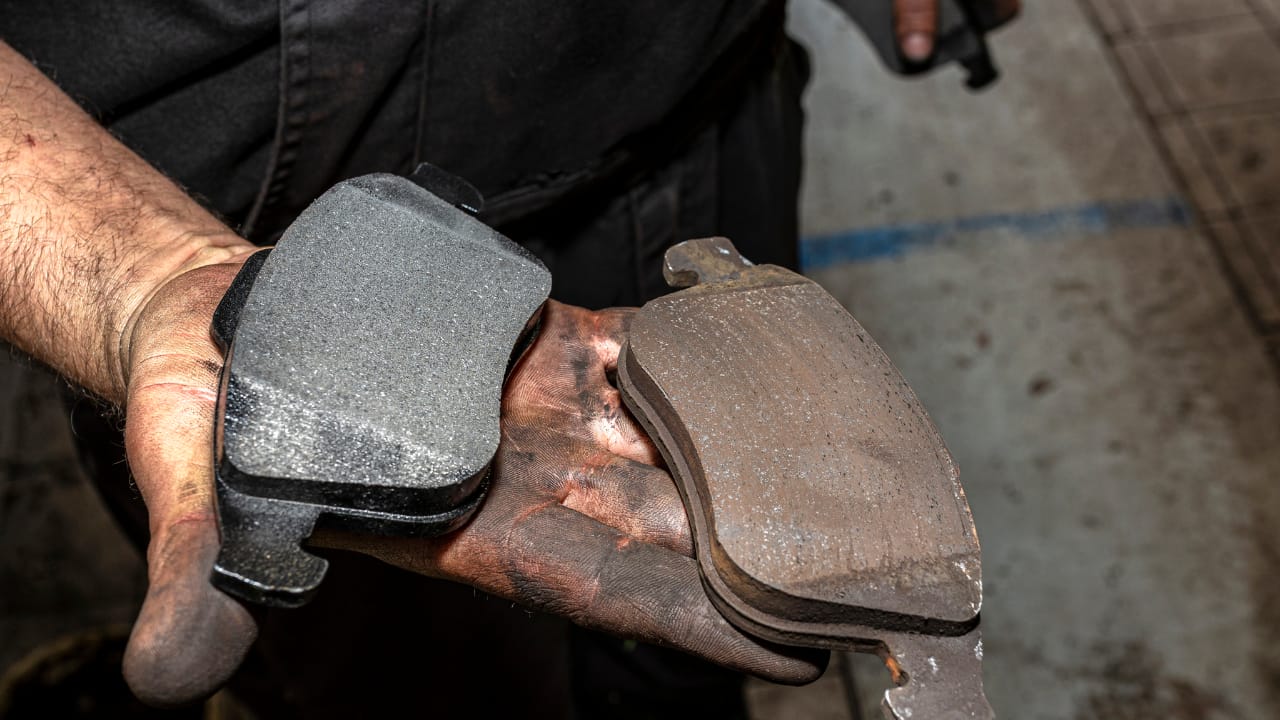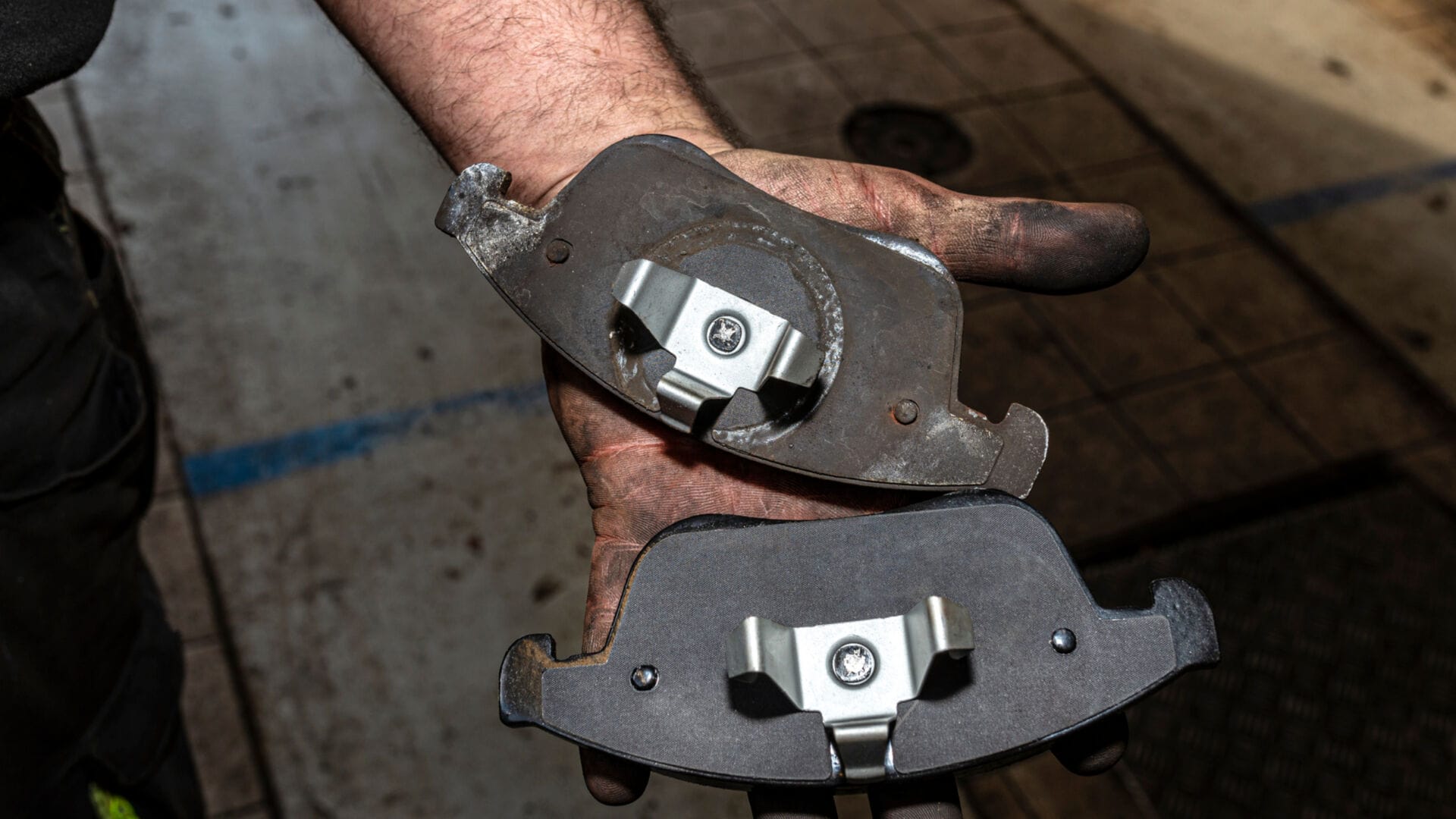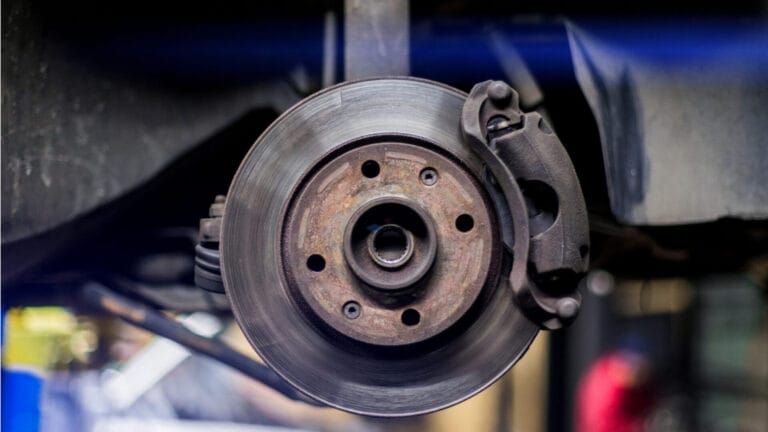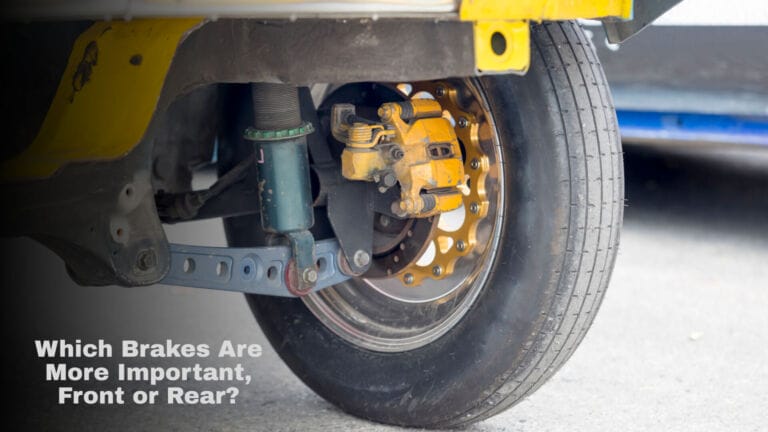How Long Will 1mm Brake Pads Last: Brake Pad Longevity Unveiled
Driving a vehicle with safe and efficient braking is of utmost importance for every driver. Brake pads are small yet significant parts of brake system that directly contribute to the braking performance of the vehicle, ensuring that it comes to a stop when needed. However, brake pads, like any other wear-and-tear item, have a limited lifespan. And it’s highly advised not to drive with brake pads that are worn out beyond the recommended specification.
I have observed that in automotive community, people are still asking how long will 1 mm brake pads last. I mean, does it make sense? When you should replace a brake pad when it reaches 3mm, not even 2mm, how can you think about driving 1mm?

Sound harsh? I had to be; it’s about our safety, and safety is beyond everything.
If new car enthusiasts come up with such question, though it makes sense, how do old ones do the same? Even some are encouraging to drive with 1mm brake pads. Some get easily influenced and happily go for a drive with 1mm brake pads, thinking it’s safe, and some get puzzled.
So to solve this puzzle and tell you about the right time to replace the brake pad to ensure safety, today I am with you. Here I will talk about brake pads, their role, how they effect safety, why you shouldn’t drive with 1 mm brake pads, and finally, if you have ended up with 1mm how long you can drive and what to do for safety? So lets jump in and learn everything.
How Long Will 1mm Brake Pads Last
The thickness of the brake pad has quick links to its ability to withstand wear and tear. Thicker brake pads contain more friction material, so they last longer. In general, newly bought 10 mm thick brake pads last anywhere from 30,000 to 70,000 miles. 1 mm is 10% of it’s actual thickness, so it should last around 3000-7000 miles. But you should avoid driving with 1mm brake pads.
Why?
Because 1mm needs immediate replacement, it indicates extremely worn brake pads. Wearing down means losing friction material. The more it loses material, the thinner it becomes. So 1mm brake pads have very minimal material available for efficient braking. When you apply the brake discs, there is not enough material to create friction to generate heat, slowing down the vehicle. Additionally, you need more driving force for brake pedaling and couldn’t efficiently stop the car on time.

Thinner brake pads means metal-on-metal contact, causing noise, rotor damage, and decreased braking performance. At this point, driving with such thin brake pads poses a significant safety risk. It increases the stopping distance, posing a danger to the driver, passengers, and other vehicles on the road. Thus, when brake pads reach this minimum thickness, it is essential to stop driving and replace them as soon as possible.
Factors That Affect Brake Pad Lifespan
Lifespan of brake pads is influenced by driving habits, mileage, braking intensity, and the type of brake pad material. Aggressive braking, frequent stop-and-go traffic, and heavy loads can accelerate brake pad wear, shortening their lifespan. How these related to brake pad wear?
Let’s know in detail.
1. Driving Habits:
Frequent hard braking, sudden stops, and aggressive driving styles can generate more heat in the braking system, and significantly accelerate brake pad wear.
2. Terrain:
Driving in areas with constant elevation changes like hilly or mountainous areas put more stress on the braking system, potentially reducing the lifespan of brake pads.
3. Brake Pad Material:
- Organic Brake pads: Generally quieter and produces less brake dust, but may wear out faster under heavy use.
- Semi-metallic: Offer enhanced durability and heat dissipation, suitable for diverse driving conditions.
- Ceramic: Known for low noise and reduced dust, providing a balance between performance and longevity.
4. Vehicle Weight:
Larger and heavier vehicles, such as SUVs or trucks, may experience faster rear brake pads wear compared to lighter vehicles.
5. Quality of Brake Pads:
The market offers a range of brake pad qualities. Investing in high-quality original pad/oem pads may initially cost more, but they can provide longer-lasting performance and better resistance to wear.
6. Weather Conditions:
Prolonged exposure to extreme heat or cold can affect the material properties of inner pad, potentially affecting outside pad and reducing their lifespan.
7. Brake System Maintenance:
Regular maintenance, including brake fluid checks and caliper inspections, contributes to overall brake system health and can positively impact the lifespan of brake pads.
8. Driving Conditions:
Stop-and-go city driving can wear down brake pads faster than highway driving, where constant speeds and fewer stops are typical.
9. Brake Pad Thickness:
Regularly monitoring the thickness of your brake pads is essential to predicting their remaining lifespan. Once the pad thickness approaches 3mm, it’s an indication that replacement is near the door.
Understanding these factors empowers car enthusiasts to take a proactive approach. By considering these elements and adapting driving habits accordingly, individuals can maximize the lifespan of their brake pads, ensuring efficient and safe braking performance for miles to come.
Regular inspections and a keen awareness of these factors will help you make informed decisions about when to replace your brake pads, contributing to the overall well-being of your vehicle.
Signs of Brake Pad Wear?
Be alert! It should never happen that you reach a brake pad thickness of 1 mm.
You should replace it before it reaches 3mm, hardly 2mm thickness, not more than that. Understand the signals and change the brake pad on time to avoid potential hazards. How do I do that?
By recognising the early warning signs of brake pad wear. If you become alert and keep your eyes and ears open, you can recognize the signs of brake pad wear without performing regular inspections. It’s better to be attentive to indicators and address brake pad issues before they become more severe.
Here are the key signs to be mindful of:
1. Squeaking or Squealing Noises:
- One of the most common signs of brake pad wear is a high-pitched squeaking or squealing noise when you apply the brakes. This sound is typically caused by a wear indicator, a small piece of metal built into the brake pad that creates the noise when the pad material becomes thin.
2. Grinding Noises:
- A more serious indication of brake pad wear is a grinding noise. If you hear a metallic grinding sound when braking, it suggests that the brake pads have worn down significantly and the metal backing of the pads is making direct contact with the brake rotor.
3. Reduced Brake Performance:
- If you notice a decrease in braking efficiency or a longer stopping distance, it could be a sign that your brake pads are worn. Diminished braking power may compromise your ability to stop quickly in emergency situations.
4. Vibration or Pulsation:
- An uneven braking surface due to uneven wear on the brake pads can lead to vibrations or pulsations felt through the brake pedal. This can indicate unevenly worn brake pads or brake rotors.
5. Warning Lights on the Dashboard:
- Some modern vehicles are equipped with brake wear sensors that trigger warning lights on the dashboard when the brake pads are nearing the end of their lifespan. If you see the brake warning light illuminated, it’s essential to have your brake system inspected promptly.
6. Visible Inspection:
- Remove the tire to visually inspect the brake pads. If the pad thickness is approaching 3mm or less, it’s a clear sign that replacement is imminent. Inspect both the inner and outer brake pads for even wear.
7. Burning Smell:
- An overheated braking system can produce a burning smell. This may indicate that the brake pads are excessively worn, leading to increased friction and heat.
Being attentive to these signs and addressing them promptly can help you avoid more significant and costly brake system repairs. Watch this video for better understanding
Regular visual inspections and periodic maintenance are essential practices for ensuring the longevity and efficiency of your brake pads, contributing to the overall safety of your vehicle.
Is It Safe To Drive With 1mm Brake Pad?
Driving with 1mm brake pads is not safe and should be avoided. Brake pads primary function is to provide the necessary friction to stop your vehicle safely. When brake pads wear down to 1mm or less, they are considered extremely thin, and several safety concerns arise:
- Reduced Stopping Power: Brake pads that have worn down to 1mm or less have significantly diminished friction material. This reduction in material compromises the ability of the brake pads to generate sufficient friction and, as a result, reduces the stopping power of your vehicle.
- Increased Stopping Distances: With thin brake pads, the vehicle requires a longer distance to come to a complete stop. This increased stopping distance poses a significant safety risk, especially in emergency situations where quick and efficient braking is essential.
- Risk of Brake Fade: Thin brake pads are more prone to experiencing brake fade, a phenomenon where the braking performance diminishes due to excessive heat generated during braking. Disc brake fade can lead to a loss of control over the vehicle and increased vulnerability to accidents.
- Damage to Brake Rotors: Continued driving with excessively thin brake pads can lead to increased wear on the brake rotors. This can result in uneven rotor surfaces leading to new rotor replacement, and other issues that may require costly repairs.
- Brake Failure: In extreme cases, driving with 1mm brake pads can lead to a failed brake job. This is an extremely dangerous situation that significantly increases the risk of accidents and injury.
So, what is the ideal brake pad thickness for safe driving?
The ideal brake pad thickness for safe driving is until it reaches 80%. It’s better to replace it at 70% (3mm), but once it reaches 80% (2mm), you can no longer drive with it.

When considering the ideal brake pad thickness for safe driving, it’s essential to prioritize safety over cost. Brake pads with a thickness of 50-70% (5-3mm) is ideal for safe driving.
When Should You Consider Replacing Your Brake Pads?
Always opt for new pads rather than risking safety with worn-out pads. Consider brake pad replacement when thickness reaches 3mm.
You should also consider pad change intervals based on your vehicle’s make and model. For instance, a Honda motor company CR-V may have different specifications, like ebc pad compared to a Toyota motor corporation Camry or an Audi. Additionally, be aware that even a few millimeters of rear pad wear can significantly impact stopping distances and overall braking performance, so regular inspections are essential to ensure optimal safety on the road.
Tips To Extend Brake Pad Lifespan
- Flush the brake line after riding 24,000 miles, or every two years. Contamination and moisture in the brake system contribute to a faster brake pad wear process.
Here is DIY brake flushing process- Video Link - Try to use a lower gear to reduce brake pad strain.
- Avoid hard or frequent engine braking; this puts extra stress on the rear pads.
- Regularly inspect brake callipers, rear rotors, etc.; any issues with these items will trim the brake pad lifespan.
- Drive cautiously, like avoiding aggressive rides and riding on roads with potholes or hazards.
FAQ
Is 1 mm Brake Pads OK?
No, 1 mm brake pads are not okay. Driving with 1 mm brake pads is risky and will eventually damage other components and require costly fixes.
How Long Will 2mm Brake Pads Last?
Brake pads at 2mm thickness indicate moderate wear. On average, they may last for another 6,000-14,000 miles, but this can vary based on driving habits and conditions. Regularly check for signs of wear, like squeaking or reduced braking efficiency. However, waiting until 2mm is cutting it close—consider replacement soon to ensure optimal braking performance and safety.
Can You Drive On 2mm Brakes?
While technically possible, driving on 2mm brake pads is risky. At this thickness, braking efficiency is significantly compromised. It’s not safe for extended periods, and waiting risks damage to the brake system.
You should replace 2mm brake pads immediately to ensure reliable stopping power, prevent accidents, and maintain overall safety on the road.
Don’t push it—your safety is worth the investment in new brake pads.
How Many mm of Brake Pad is OK?
Generally, brake pads with 4mm or more thickness are considered safe. This ensures ample friction for effective braking. However, individual driving conditions vary, so regular checks are crucial. If your brake pads approach 3mm, start planning for replacement. Waiting until 2mm or less risks compromising braking performance and safety. Stay proactive, prioritize safety, and replace brake pads within the recommended thickness for optimal driving conditions.
How Long Will 4mm Brake Pads Last?
As we know, a new brake pad 10-12 mm can last between 30,000-70,000. Based on that, a 4mm brake pad can last between 12,000-28,000 miles. However, it can vary depending on factors like driving condition, brake pad quality, etc. that influence the lifespan.
Closing Words
In simple terms, driving on 1mm brake pads is a dangerous game. It means weak brakes, longer stopping distances, and a higher chance of brake failure. It’s not just inconvenient; it’s a safety hazard. Your brakes are there to keep you safe. Ignoring this thinness is like playing with fire on the road.
So, get those brake pads replaced ASAP for your safety and everyone else’s. Don’t wait until it’s too late.





